Are Compression Socks Good for Achilles Tendonitis?
If you have ever suffered from a running injury, you’ll know how frustrating it can feel to be sidelined, especially if you have constant aches and pains in your heel as you recover. A common injury that causes heel pain and swelling is Achilles tendonitis (also spelled Achilles tendinitis). In this article we will answer questions about Achilles tendinitis like:
- Is it OK to walk with Achilles tendonitis?
- What should I not do with Achilles tendonitis?
- Are compression socks good for Achilles tendonitis, and if so, how can they help?
In short, thanks to the pressure compression socks apply to the ankle and lower leg area, compression socks can reduce swelling and provide relief for pain and discomfort for people with Achilles tendonitis. Importantly, compression socks may help prevent Achilles tendon problems when hiking or running.
Read on to find out:
- What is Achilles tendonitis and why it happens
- Can compression socks help with recovery from Achilles tendonitis
- Whether you can prevent Achilles tendonitis by wearing compression socks
- How to recover from Achilles tendonitis
WHAT IS ACHILLES TENDONITIS AND WHAT CAUSES IT?
Achilles tendonitis is an overuse injury, meaning it occurs when the Achilles tendon has experienced repetitive impact for too long without adequate rest and recovery. The Achilles tendon is the band of tissue that connects the calf muscles at the back of the leg to the heel bone. Achilles tendonitis is usually experienced by runners, but walkers and hikers could also suffer from it.
Typically, runners develop Achilles tendonitis when they increase their load too quickly, either through excessive increases in running distance or speed. Or it could happen when you train hard without a proper warm-up to mobilize your tendons. Gradually increasing your training by small amounts (<10% increase in distance per week) reduces your risk of developing running-related injuries, according to one scientific report.
Another at-risk group for Achilles tendonitis is made up of people enjoying casual sports, which place extra strain on the calf muscle. These sports include tennis, basketball, soccer, or other sports when you change direction quickly. It is common for middle-aged people to suffer from Achilles tendonitis in these scenarios.

ARE COMPRESSION SOCKS GOOD FOR ACHILLES TENDONITIS PREVENTION?
Since people get Achilles tendonitis primarily from overuse of the calf muscles, scientists and researchers have had difficulties pinpointing a product or garment that can prevent Achilles tendonitis. In some cases, wearing orthopedic inserts in shoes has helped release some pressure on the Achilles tendon, thereby reducing the risk of developing tendonitis.
Compression socks also play an important role in reducing swelling and increasing circulation in the lower legs, according to a scientific report. Compression socks are especially beneficial if you’re on your feet a lot because compression socks support healthy blood flow and prevent your legs and ankles from swelling and becoming painful. This shows that compression socks might improve pain or discomfort in those who work their Achilles tendon a lot: runners, long-distance walkers, hikers, or even nurses, teachers, and more.
Moreover, because compression socks improve blood flow and reduce pain from swelling or inflammation, they can be helpful when you’re recovering from calf strains, sprained ankles, or other injuries. Injury recovery can be a difficult time for athletes, especially because some athletes ramp up their workouts too quickly when they’re enthusiastic to return to sport. This puts them at increased risk of picking up injuries like Achilles tendonitis. Therefore, it may be a good idea to wear compression socks that can better support your ankles and calf muscles during this time, as a preventative act.
DO COMPRESSION SOCKS HELP ACHILLES TENDONITIS RECOVERY?
Compression is an important way to treat Achilles tendinitis, as reported by the Mayo Clinic. Furthermore, A 2020 scientific study found that compression socks or stockings are helpful for reducing inflammation. This shows us that compression socks may be helpful for reducing pain or soreness due to inflammation from Achilles tendonitis.
To understand the role of compression in recovery from injury, we need to look at the fundamental elements of treatment: rest, ice, compression, and elevation. This is known as the RICE method. The following steps will help
- Rest and protect the injured limb or area - including a complete break from effort or exercise;
- Use ice on the injured area as soon as possible;
- Wrap the injured area in bandage and/or compress with compression garments as soon as possible after injury;
- Elevate or prop up the area or limb.
By compressing a limb where an injury has taken place, you support the blood flow towards the muscle, which in turn, may help recovery.
Moreover, compression also helps stabilize the muscle and reduce vibrations in tendons due to impact, which can lead to less strain. This is why wearing compression socks can be great for people starting to run and exercise in general. It eases you into the literal impacts associated with exercise.
In the case of Achilles tendonitis, wearing compression socks is one of the elements of treatment of injury and, according to one study, recovery from exercise. However, a key part of understanding and improving your situation will be to investigate and address the root cause of tendonitis. So, ask yourself if you could have caused the condition by overloading your training program, and what you can do to alleviate this in the future. It’s also important to incorporate some local muscle and tendon prevention elements, like stretches, strength exercises, and more.
THE SCIENCE BEHIND COMPRESSION SOCKS FOR ACHILLES TENDONITIS
The key benefit of compression socks is that they provide gentle pressure on the lower legs, which improves blood flow in the area. Increased blood flow improves the transport of oxygen throughout the body, which may lead to quicker recovery from exercise. Compression socks have also been found by researchers to decrease your risk of developing blood clots and more serious problems like Deep Vein Thrombosis (DVT).
Moreover, using compression socks may help stabilize the muscles. This can be very beneficial for coming back from Achilles tendonitis, providing more support to the calf muscles, and minimizing impact force on the tendon when walking or running. However, it’s important to note that Achilles tendonitis develops more because of a pulling of the tendon, rather than an instability or vibrations around it. It is important to know that scientists have found no direct correlation with wearing compression socks and reducing the risk of Achilles tendonitis, despite the benefits of compression socks for inflammation and exercise recovery.
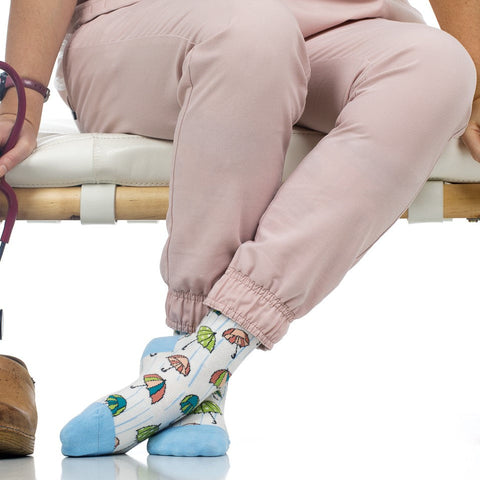
HOW TO CHOOSE THE BEST COMPRESSION SOCKS FOR ACHILLES TENDONITIS
To find the best compression socks for help with your Achilles tendonitis recovery, you should ask yourself three questions:
- What sort of activities will you wear the socks for?
- What weather conditions are you facing?
- Do you have any allergies or skin conditions to be aware of?
The answers will determine the type of materials you can and should wear. Compression socks come in a variety of fabrics, from versatile cotton for everyday wear at the office, in school or for a casual day out, to more specialized options. Merino wool is a great choice for hikers and runners thanks to its thermoregulating properties, for example. And, if you’re looking for thin and lightweight socks, there is also Nylon (with a moisture-wick variety for humid conditions).
Once you’re clear on the type of activity and weather, if you’re likely to suffer from a skin condition or allergy, we recommend checking out hypoallergenic Merino wool for your compression socks. This fabric also reduces itching and is known for softness and comfort.
Finally, compression socks have to fit perfectly in order to give you the full benefits. Check out our sizing guide here to find out how to get the right size.
HOW TO WEAR COMPRESSION SOCKS FOR ACHILLES TENDONITIS RECOVERY
Wearing compression socks is as simple as… wearing socks and making sure they fit comfortably! All you must do is pick the right material and correct size for you. Also, understand the different compression pressure levels to make sure you’re not putting too much pressure on your limbs. Finally, we recommend increasing the duration you wear your compression socks in gradual increments; start with shorter periods of time (like 30 minute to an hour) and increasing slowly as you get used to them.

Here’s a quick primer on pressure levels for compression socks:
- 15-20 mmHg is for light to moderate support which can be worn all day and suits you if you’re traveling or need to be on your feet a lot
- 20-30 mmHg offers more support and is therefore recommended for people suffering from conditions like DVT, lymphedema, varicose veins or for those recovering from surgery
- 30-40 mmHg is firm support that is usually medically prescribed
If you’ve purchased your compression socks for recovery after an Achilles tendon injury, we recommend starting with 2-3 hours of casual wear and seeing how you adapt. You can then gradually increase the length of time you wear them and can even wear them all day!
HOW LONG DOES ACHILLES TENDONITIS RECOVERY TAKE?
According to Penn Medicine, it can take anywhere 2 to 3 months to recover from Achilles tendonitis. However, the first 6-8 weeks are critical as this is when most people risk jeopardizing their recovery by not treating their injury appropriately.
Doctors recommend early treatment for this injury. This includes rest and possibly immobilization of the foot and ankle, avoiding all physical activity in the first instance, and compression therapy.
As you notice an improvement in pain, speak to your doctor. As pain improves you may be able to start stretching and strengthening exercises to work towards returning to your normal exercise routine.
WHAT CAN YOU DO TO SPEED Up RECOVERY From Achilles Tendonitis?
Wearing compression socks is only one of the steps you can take to improve recovery from Achilles tendonitis. Depending on the severity of the condition and on advice from your doctor, rest is key, followed by icing and then various exercises as you continue your recovery.
REST
Initially, you should avoid any stress on the leg that is suffering from Achilles tendonitis. Extreme cases may require immobilization with a walking boot or special supportive gear or an ankle brace. For less severe cases, simple rest will be enough - so, avoiding running or exercise, and walking as little as possible.
ICE THERAPY
Using ice on the affected area will help relieve some of the pain and swelling from Achilles tendonitis (depending on the level of the injury).
STRETCHING AND STRENGTHENING EXERCISES
There are a few types of stretches that you can do to mobilize your muscles before running, which are good to learn during injury recovery. After you receive approval from your doctor, start doing these in the morning as well as before and after running.
Strengthening your calf muscles can also help your recovery process and even reduce the risk of developing tendonitis in the future. You can do calf raises, start with simple standing ones without any support or weight, and increase the difficulty by holding a dumbbell or doing these on one leg only (which will also help your balance).
It’s also a good idea to cross-train by alternating exercise types. For example, rather than just running, you can do one or two cycling sessions a week, add in swimming or other low-impact activities to keep you fit without the risk of getting an Achilles tendon injury again.
WHEN TO SEE YOUR DOCTOR FOR ACHILLES TENDONITIS
If you often experience pain and discomfort in your Achilles tendon, it’s a good idea to consult with a doctor to better understand underlying causes.
It’s important to address recurring Achilles tendon pain and discomfort. Consult with a doctor if you are experiencing chronic problems, and they may refer you to physical therapy or sports injury specialists to help you recover.
Finally, if you experience severe pain, you could have a ruptured Achilles tendon. In this case, you should seek medical advice immediately.
CONCLUSION
Achilles tendonitis can be a debilitating and frustrating condition which often affects runners who have overloaded their training plan. To avoid Achilles tendonitis, ensure you’re always increasing your running progressively.
Wearing compression socks during your runs can help support your ankle and calf muscles better, promote better blood flow, and make you feel lighter and more comfortable. This will not necessarily avoid developing Achilles tendonitis, but it can support you during your return from injury. Finally, choose a pair of good quality compression socks to help with recovery from Achilles tendonitis; they can improve recovery by reducing swelling and discomfort.
Try a pair of our stylish compression socks and feel the difference today!

References
Nielsen, R. Ø., Parner, E. T., Nohr, E. A., Sørensen, H., Lind, M., & Rasmussen, S. (2014). Excessive progression in weekly running distance and risk of running-related injuries: an association which varies according to type of injury. The Journal of orthopaedic and sports physical therapy, 44(10), 739–747. Read it here.
Mayo Clinic Staff. (2022). Tendinitis - Diagnosis and treatment - Mayo Clinic. Read it here.
Charles, T., Mackintosh, D., Healy, B., Perrin, K., Weatherall, M., & Beasley, R. (2011). Merino wool graduated compression stocking increases lower limb venous blood flow: a randomized controlled trial. Advances in therapy, 28(3), 227–237. Read it here.
Montoye, A. H. K., Mithen, A. A., Westra, H. L., Besteman, S. S., & Rider, B. C. (2021). The Effect of Compression Socks on Maximal Exercise Performance and Recovery in Insufficiently Active Adults. International journal of exercise science, 14(7), 1036–1051. Read it here.
Clarke, M. J., Broderick, C., Hopewell, S., Juszczak, E., & Eisinga, A. (2016). Compression stockings for preventing deep vein thrombosis in airline passengers. The Cochrane database of systematic reviews, 9(9), CD004002. Read it here.
Penn Medicine. (2022). Achilles Tendonitis. Pennmedicine.org. Read it here.
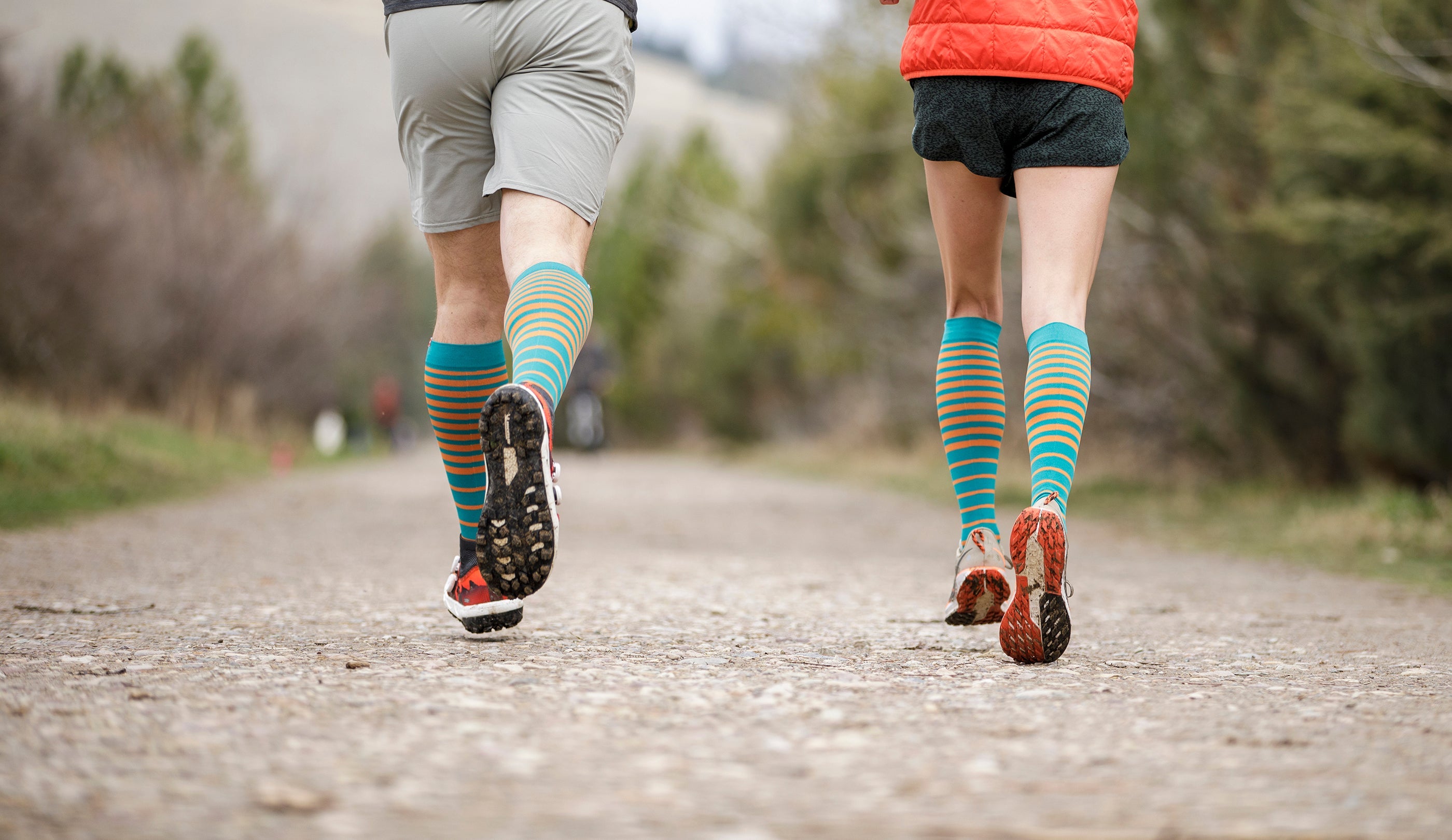
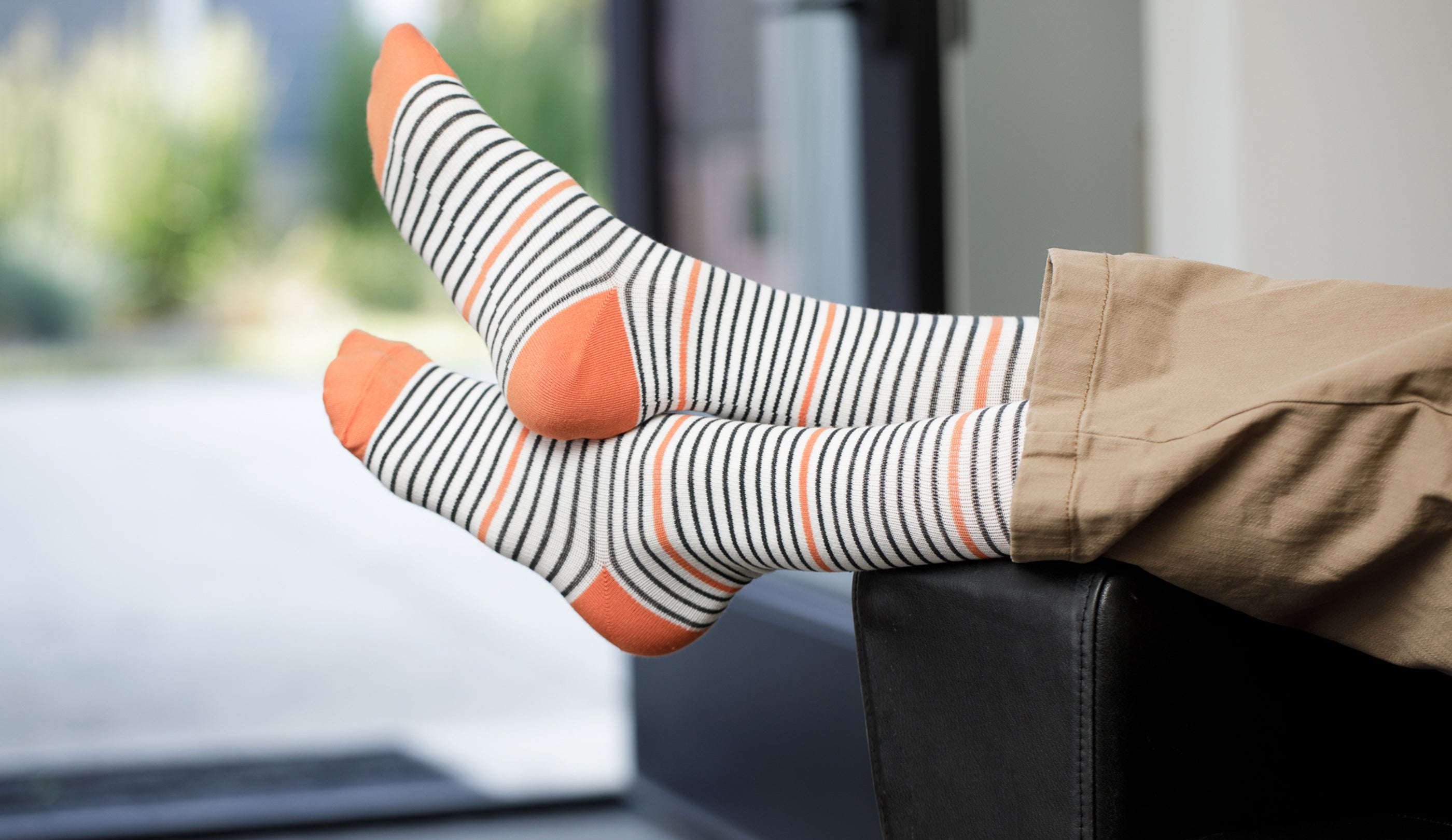
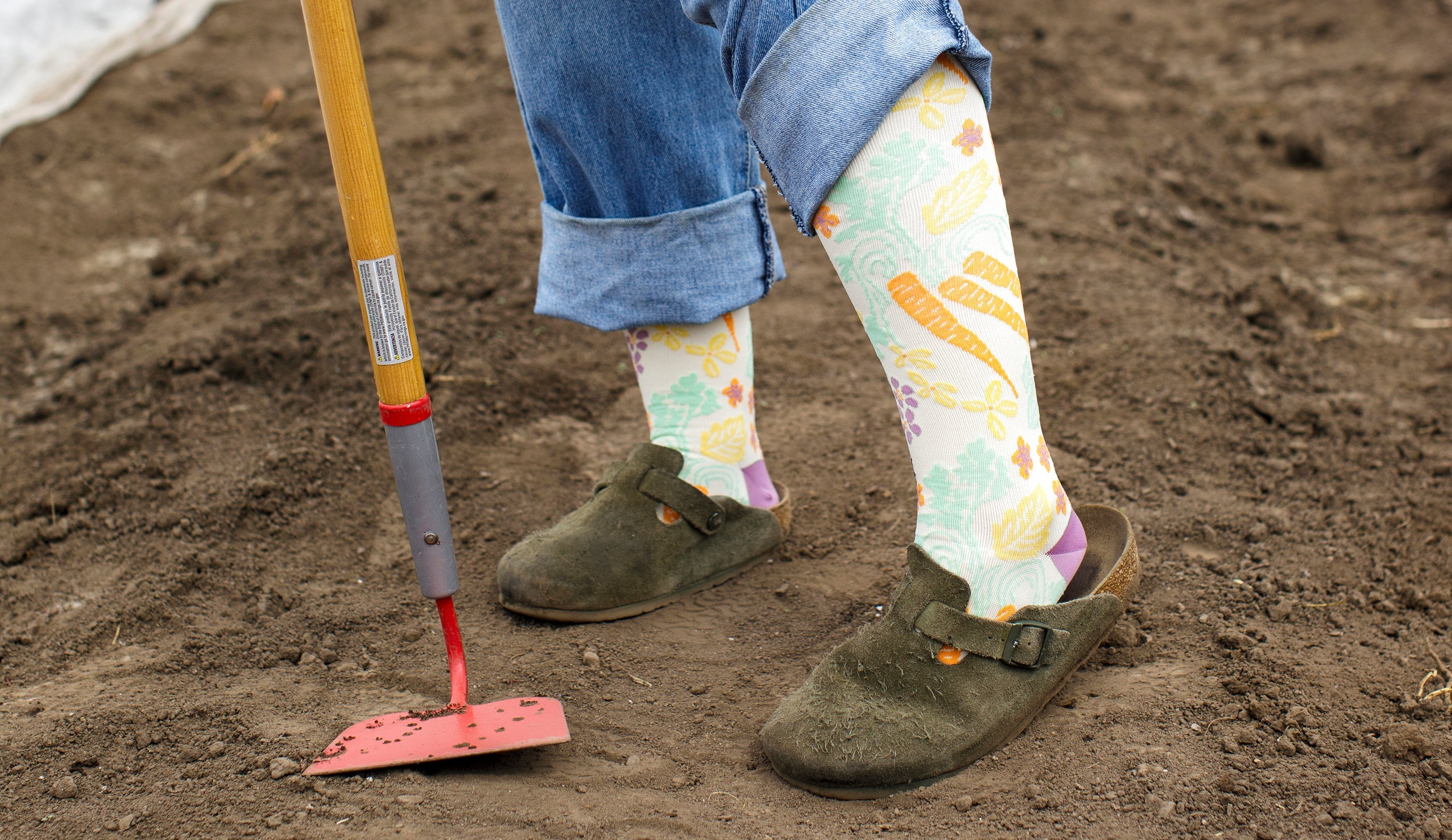
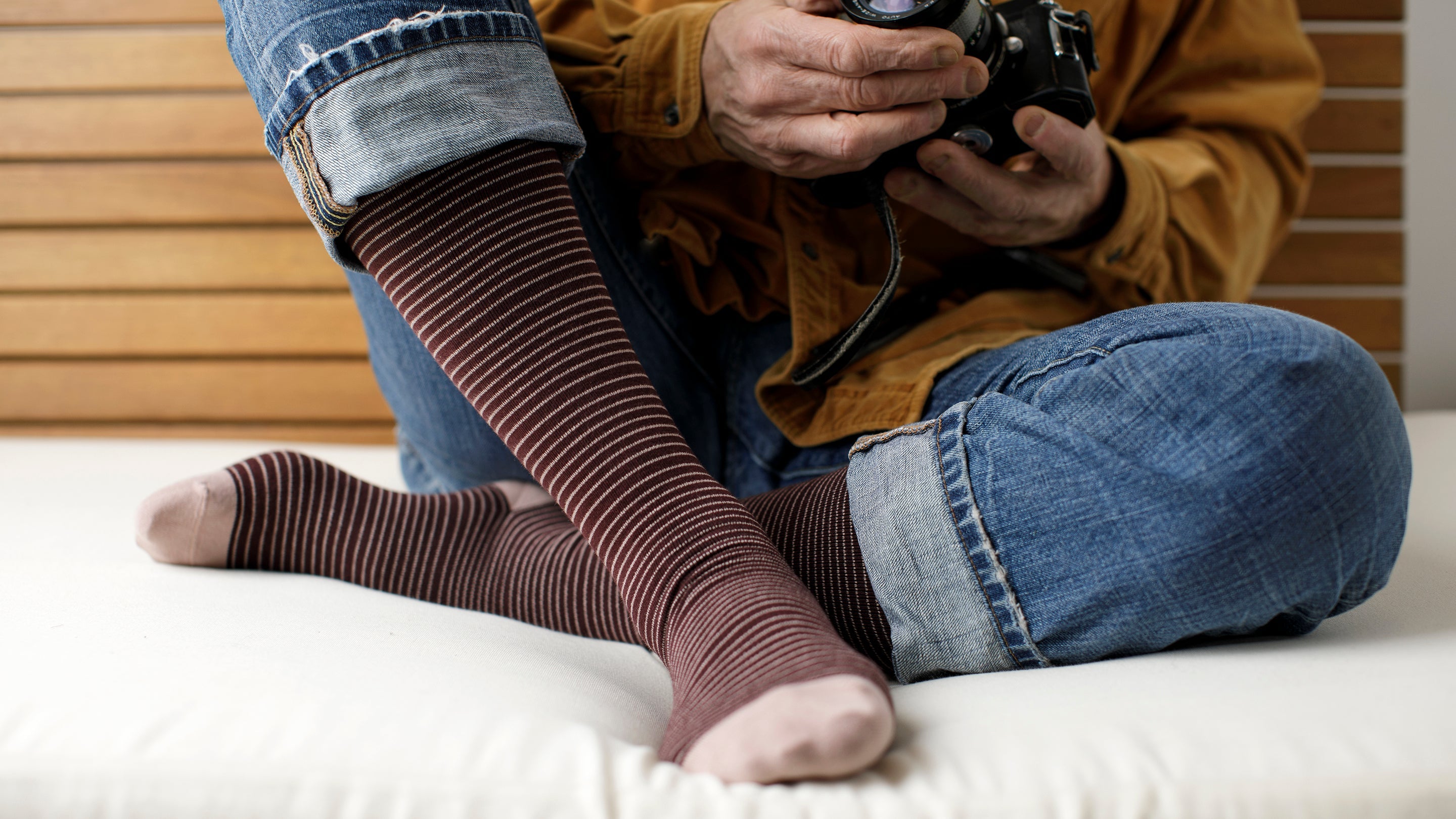





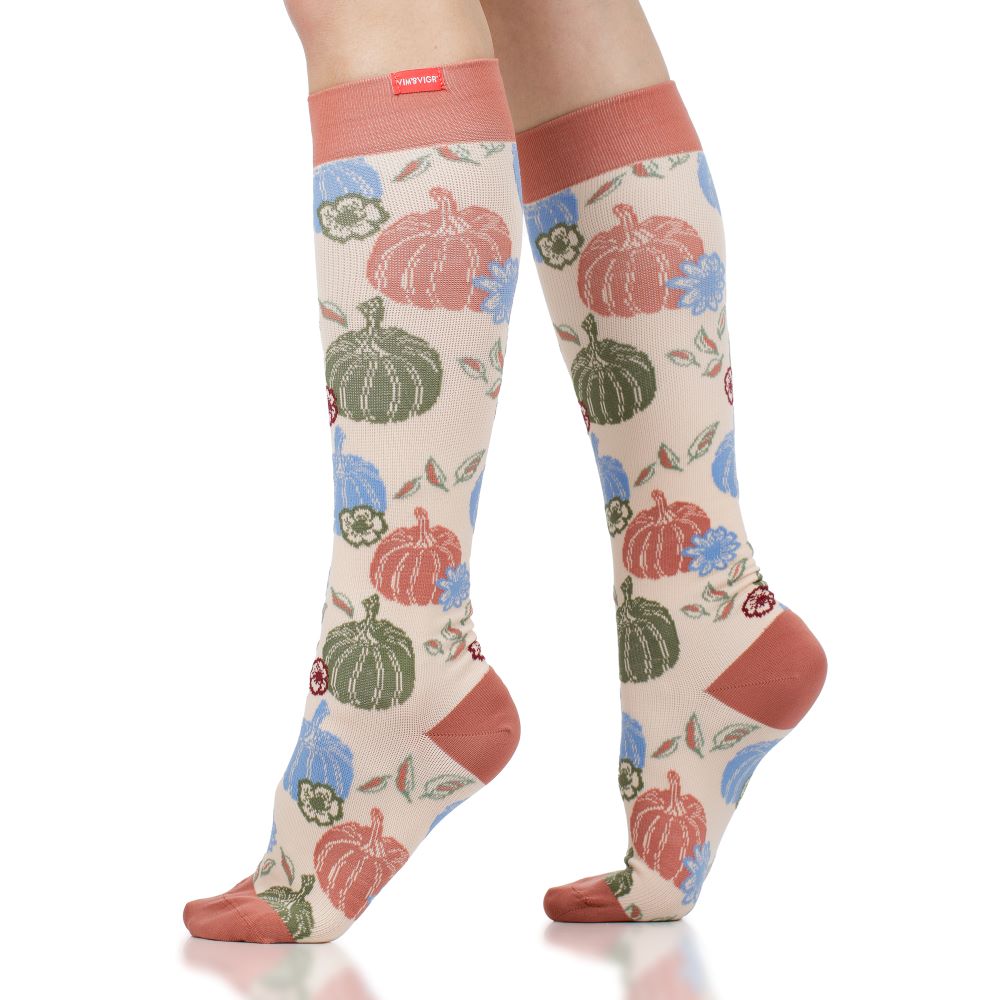
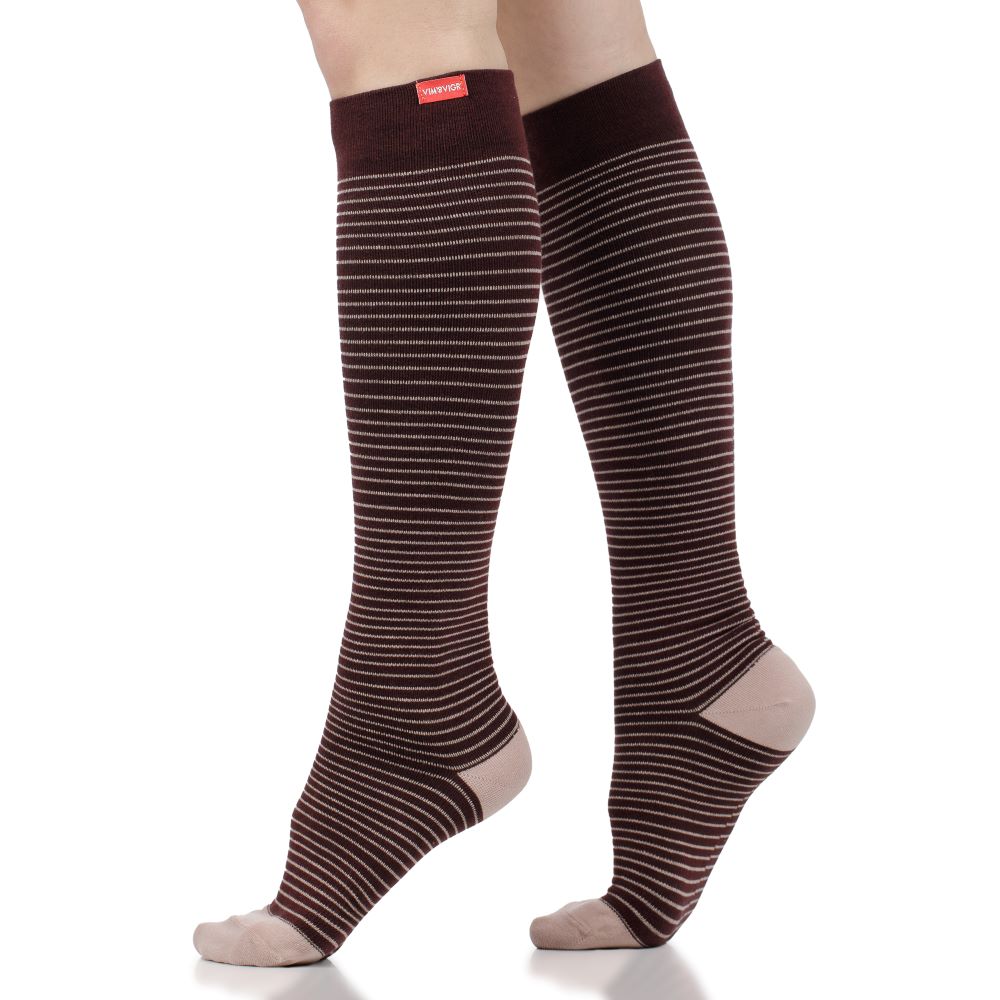
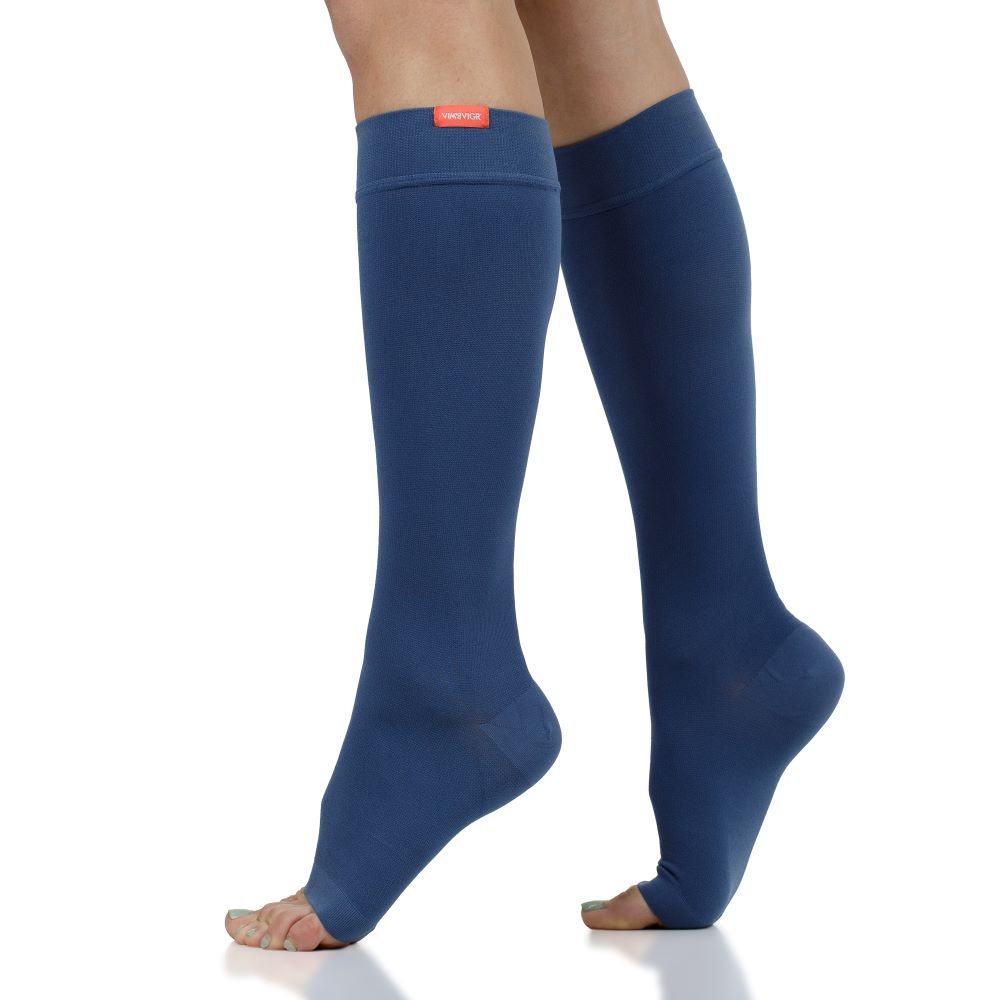




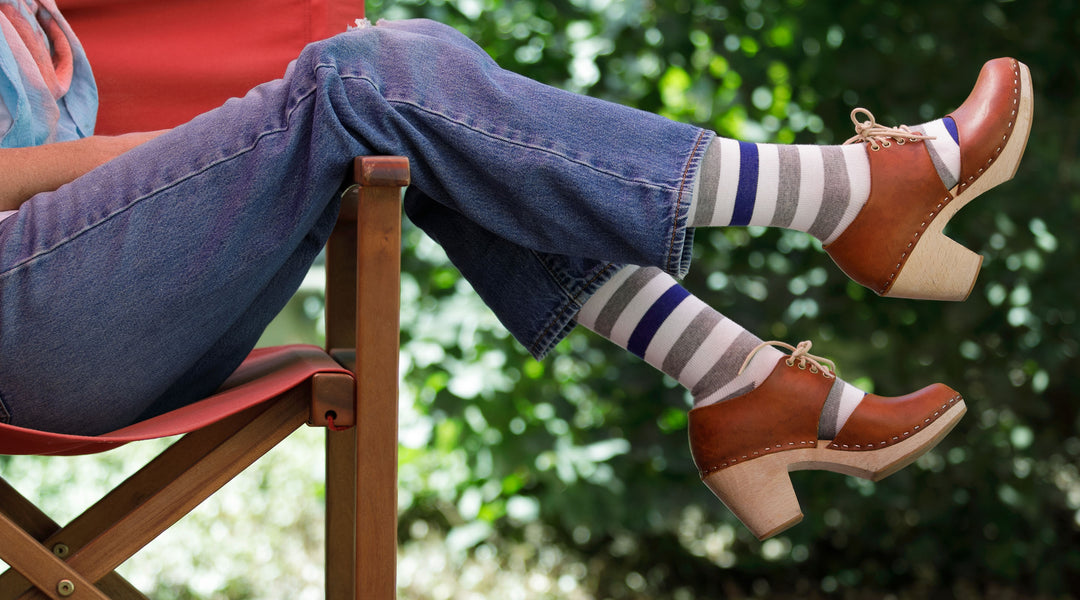
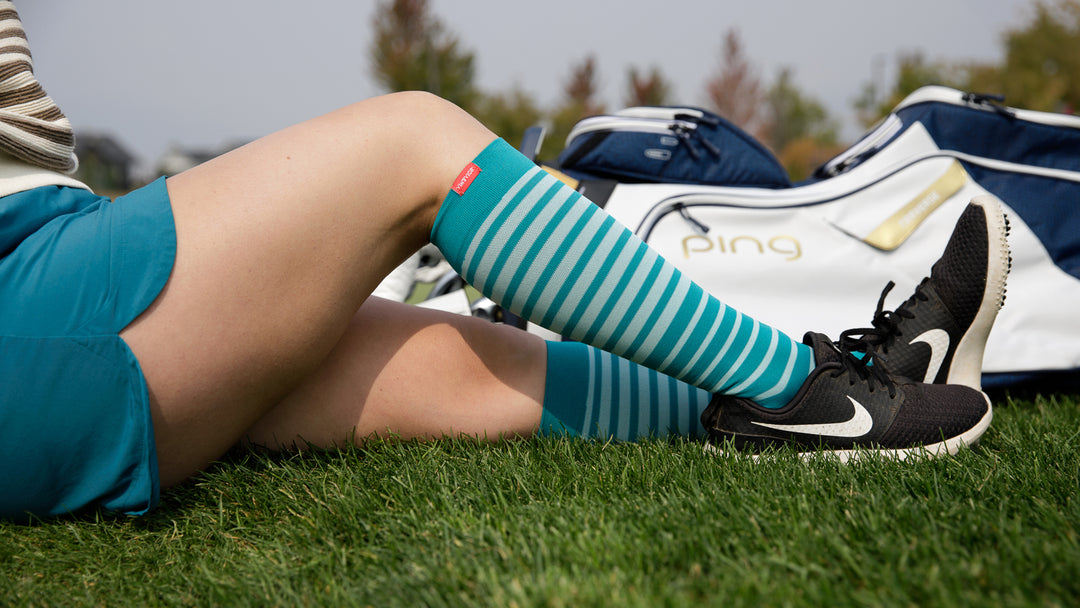
Leave a comment